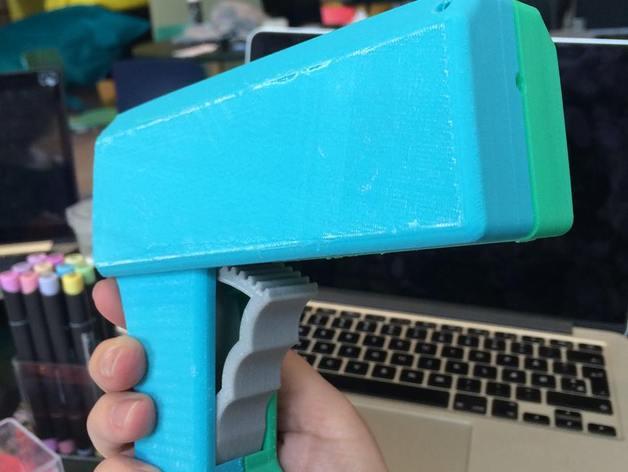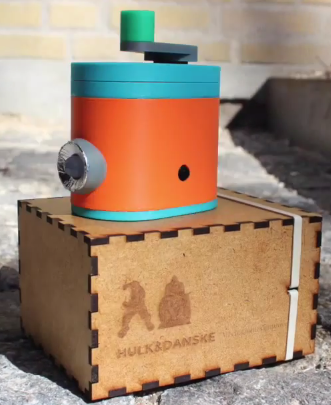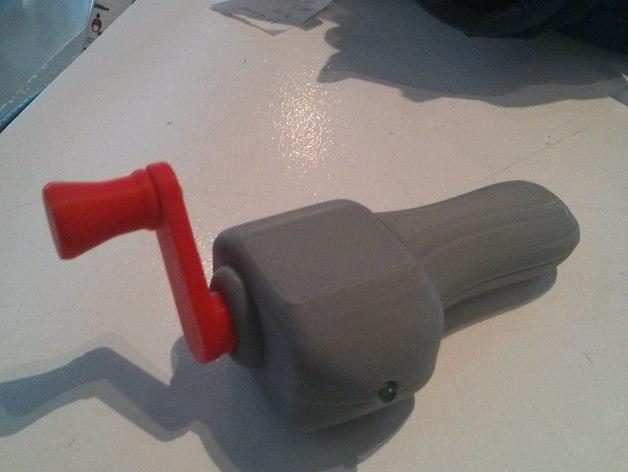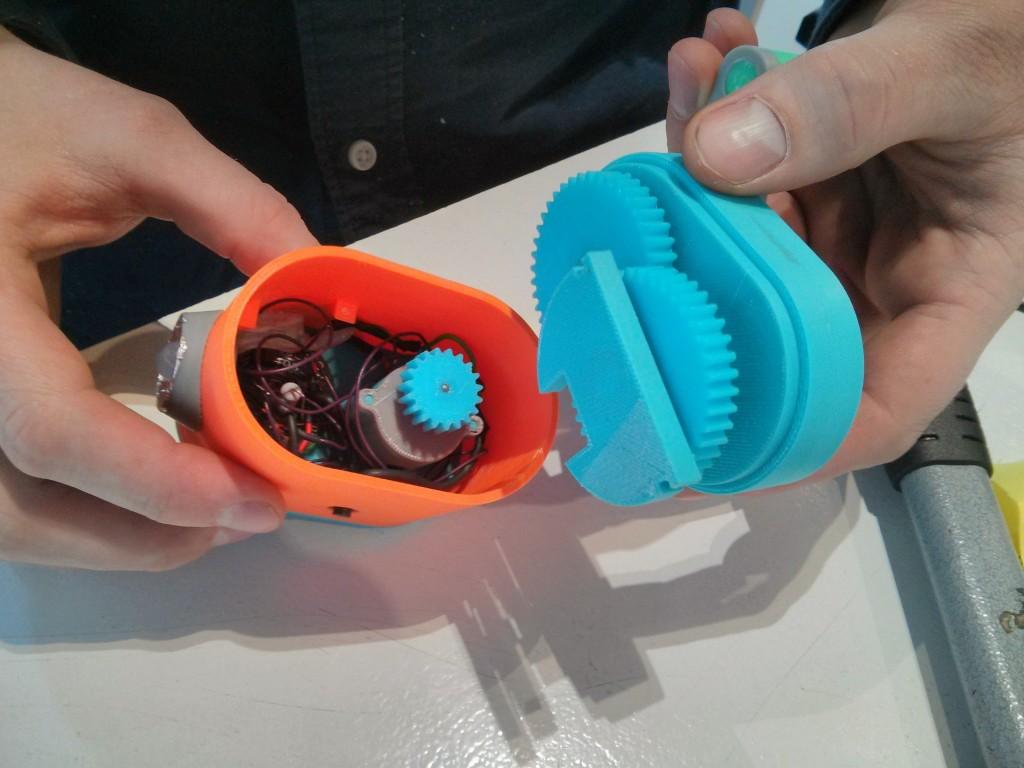3D printing is exciting, and many are excited and look forward to not only learning about the technology but also trying their hand at producing their own 3D printed models. Often, that’s not as easy as it sounds as equipment can be expensive, depending on location and project needs, and there can be a learning curve involved.
Many students these days are lucking out though when it comes to 3D printing as there are growing opportunities and resources within learning institutions.

Ali Gürcan Özkil
Colleges understand that digital design and 3D printing skills are attractive to potential employers and they want their graduates to get good jobs. Technology companies and 3D printing manufacturers recognize that not only are learning institutions great customers, but they also possess the captive audience that the manufacturing, design, and engineering industries would like to train up and turn out in possession of some serious skills.
We’ve reported on many student 3D printed projects, from engineering to architecture, and many in the area of design. Teachers and professors have reported that students are apt to become so excited about 3D printing that they become obsessed with the technology, wanting to 3D print everything, even when it’s not truly cost-effective or necessary—it’s just become so fascinating that they jump at every opportunity to 3D print something–anything. In Ali Gürcan Özkil’s class however, students are expected to center their designs around items that can only be produced through 3D printing, and they’ve come up with several variations on the 3D printed dynamo.
“Part of my course is about ‘Design for 3D Printing,’ and particularly functional prints that are a part a mechanical construction or a mechanism,” said Özkil, Assistant Professor, DTU Mechanical Engineering at the Technical University of Denmark. ”We chose the dynamo theme because it possessed some nice challenges. It has moving and meshing parts, uses mechanical fasteners, and needs to be coupled with some electronics.”
We were able to take a look at some of the designs that have been produced in the class recently, from one that functions as a hand-cranked flashlight, to a dynamo light-gun, to the streamlined ErgoNamo, showing off some of Denmark’s famed style in ergonomics.
“This is the second year of this setup in the course, and starting from the last year, I asked students to upload their designs to Thingiverse and specify which designs they have derived their dynamos from, and told them that I naturally expect the results to be better than the best of class from the previous year,” said Özkil.
“This is particularly interesting to me, because I do research in engineering design and product development, and I can see a clear pattern shifting towards ‘collective design’ and dynamos from this year are a good example to this – they are all pretty good and some of them are very impressive.”
The 3D printed Dynamo, by Hulk Danske, was designed in CAD and is completely 3D printed except for the use of three roller bearings and a small DC motor. It features a crank on the top of the device that can offer enough power from the small DC motor for the flashlight, which can also operate as a strobe. The files are available on Thingiverse for download.
The design is very compact, obviously, encapsulating the electronics, but that was a challenge, and the students were aware that the small size of the dynamo was a minor problem. After melting down rubber and isolating the wires, they were able to fit the electronics in the allotted space. Different team members handled different parts of the project, with it all coming together in one tiny design that functions as something that could be a much-needed device in many situations.
 The dynamo gun looks like a project that was probably a lot of fun for their team, engaging them in a design that actually produced another 3D printed light source. Again, it’s manually driven, with the trigger working to make the wheels and motor spin, producing light. Using Creo parmetrics and ABS for the 3D printed parts, they also constructed the piece with electronic components for making a joule thief, and a rectifier. Items they needed, aside from 3D printing, were:
The dynamo gun looks like a project that was probably a lot of fun for their team, engaging them in a design that actually produced another 3D printed light source. Again, it’s manually driven, with the trigger working to make the wheels and motor spin, producing light. Using Creo parmetrics and ABS for the 3D printed parts, they also constructed the piece with electronic components for making a joule thief, and a rectifier. Items they needed, aside from 3D printing, were:
- Transistor of type npn (2N3904 or similar)

- Resistor (1kOhm)
- Toroid (Can be salvaged from a CLF bulb)
- 26 gauge wire
- 4 standard diodes
- Breadboard
The simplicity of how all the parts fit together inside the 3D printed parts is really quite ingenious, allowing the spring-loaded trigger to work as the crank to get the light going. These files also are available for download on Thingiverse.
The Ergonamo is another cool little device, resembling a fishing reel. It’s as simple as reeling the crank around to get the light on this 3D printed piece going. Check out the video they offer to see how it functions. Besides the 3D printed pieces, it required several other small items:
- An LED-diode
- Small DC-motor
- Joulethief for optimal light quality
- Some screws and wire
Are you interested in downloading any of these designs? Have you produced a 3D printed dynamo of your own? Tell us about it in the 3D Printed Dynamo forum thread over at 3DPB.com. Check out the 3D printed dynamos in action in the videos below.
Subscribe to Our Email Newsletter
Stay up-to-date on all the latest news from the 3D printing industry and receive information and offers from third party vendors.
You May Also Like
3D Printed Heat Spreader Could Improve Efficiency of Electronics
The low-hanging fruit for decarbonization has long been improving the efficiency of existing systems, hence the justification for LED lights and ENERGY STAR certified appliances. While such minor moves are...
3D Printing News Unpeeled: Marine Gearboxes, 3D Printed Motors and $1.7 Million in Seed Funding
UK based Equipmake just released their Ampere-220 e-axle system. The system, which is meant for high performance electric cars, was similar to one released on the Ariel HIPERCAR. It has...
CEAD Unveils 36-Meter-Long 3D Printer for Abu Dhabi’s Al Seer Marine
CEAD, a Dutch original equipment manufacturer dedicated to large-format 3D printers, has unveiled what it claims to be the world’s largest robotic arm-based 3D printer. At 36 meters long and...
3D Printed Biocomposites Could Help Reduce Marine Plastic Pollution
Concerns about the impact of plastic litter and microplastics in the oceans are at the forefront of environmental study. For decades, the marine environment has suffered from the degradation of...






































